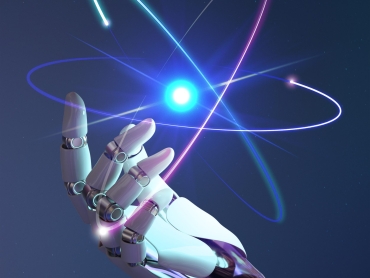In today’s fast-paced digital economy, businesses are under tremendous pressure to improve efficiency, reduce costs, and deliver superior customer experiences. One of the most transformative tools driving this change is Robotic Process Automation (RPA). By deploying intelligent digital workers that automate repetitive, rule-based tasks, RPA is revolutionizing industries, reshaping operations, and creating new opportunities for innovation.
What is Robotic Process Automation (RPA)?
At its core, Robotic Process Automation refers to software bots that mimic human interactions with digital systems. These bots can perform routine, repetitive tasks such as:
Data entry into ERP and CRM systems
Invoice and payment processing
Generating compliance reports
Handling HR onboarding processes
Processing customer requests
Unlike traditional automation, which often requires complex coding and deep system integration, RPA allows for faster deployment with minimal IT involvement. Organizations can build, test, and launch automation solutions in weeks instead of months.
Key Characteristics of RPA Bots:
Rule-Based Execution: Bots follow predefined workflows consistently.
Non-Invasive: RPA works with existing applications without modifying core systems.
Scalable: Hundreds of bots can be deployed simultaneously to handle volume spikes.
24/7 Operations: Bots do not require breaks, vacations, or sick leave.
Why Businesses Are Turning to RPA
1. Enhanced Productivity
RPA bots can perform high-volume tasks at lightning speed, completing processes in minutes that would take human workers hours. This directly improves productivity and accelerates service delivery.
2. Cost Reduction
By automating manual, labor-intensive tasks, organizations reduce staffing costs, minimize errors, and cut operational expenses. A Deloitte report indicates that companies adopting RPA see an average 30–60% cost savings within the first year.
3. Improved Accuracy and Compliance
Humans are prone to mistakes, especially with repetitive work. Bots, however, execute tasks with 100% accuracy when properly configured. Every bot action is logged, providing transparent audit trails for compliance purposes.
4. Greater Flexibility and Scalability
Businesses face fluctuating workloads. RPA allows companies to scale up or down seamlessly by deploying or pausing bots as demand requires—without hiring or laying off staff.
5. Better Employee Experience
When routine tasks are automated, employees can focus on strategic, creative, and customer-facing activities, improving job satisfaction and reducing burnout.
Intelligent Digital Workers: Beyond Basic Automation
Traditional RPA focused on rules-based processes. Today, intelligent digital workers powered by AI and machine learning take automation to the next level.
Capabilities of Intelligent Digital Workers
Natural Language Processing (NLP): Enables bots to understand and respond to customer inquiries.
Machine Learning (ML): Helps bots adapt to changing data patterns and make predictive decisions.
Computer Vision: Allows bots to read unstructured documents, images, and even handwritten notes.
Decision Making: Intelligent bots can analyze scenarios and select optimal actions.
This evolution of RPA + AI is known as Hyperautomation, where digital workers collaborate seamlessly with humans to automate complex end-to-end business processes.
Real-World Applications of RPA
1. Financial Services
Automating loan approvals and credit checks
Handling fraud detection alerts
Streamlining customer onboarding (KYC/AML compliance)
2. Healthcare
Managing patient appointment scheduling
Processing insurance claims
Generating compliance and regulatory reports
3. Manufacturing
Supply chain optimization
Inventory tracking and forecasting
Automating quality assurance workflows
4. Retail and E-commerce
Managing product data and pricing updates
Processing large volumes of orders
Personalized marketing automation
5. Customer Service
Chatbot-driven inquiries
Automated ticket classification and resolution
Real-time account updates
How RPA Supports Digital Transformation
RPA is not just a cost-saving tool—it’s a strategic enabler of digital transformation. It helps organizations:
Accelerate Innovation: Freeing employees to focus on creative solutions.
Integrate Emerging Technologies: Combining AI, analytics, and cloud services for smarter workflows.
Enhance Customer Experience: Faster responses, fewer errors, and more personalized service.
Enable Remote Work: Bots handle backend processes while employees engage with customers from anywhere.
The Future of RPA and Intelligent Digital Workers
The RPA market is growing rapidly. Analysts predict it will surpass $25 billion globally by 2030. Future RPA will include:
Proactive Bots: Capable of anticipating needs and taking action without human input.
Voice-Enabled Automation: Integrating with voice assistants and IVR systems.
AI-Driven Insights: Bots providing strategic recommendations, not just operational execution.
End-to-End Hyperautomation: Fully automated business ecosystems with minimal human intervention.
Challenges and Best Practices
Common Challenges:
Resistance from employees fearing job loss
Poorly defined automation strategies
Over-automation of processes that require human judgment
Security and compliance risks if not properly monitored
Best Practices:
Start with high-volume, rule-based processes.
Involve employees early to gain buy-in.
Ensure strong governance and monitoring.
Scale gradually—measure ROI before expanding.
Combine RPA with AI for long-term impact.
Conclusion
Robotic Process Automation is transforming how businesses operate in the digital era. By integrating intelligent digital workers, companies gain unparalleled efficiency, cost savings, compliance, and employee satisfaction. As RPA continues evolving into hyperautomation, businesses that adopt it early will be best positioned to thrive in an increasingly competitive marketplace.
RPA is not merely a tool—it’s a strategic partner driving the future of work.








